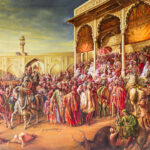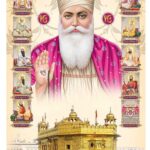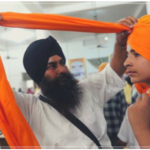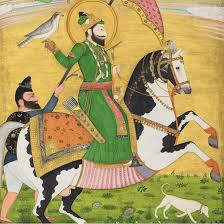Sikh beliefs about death
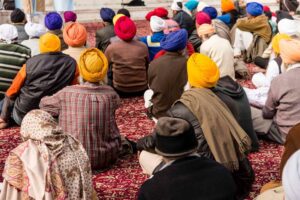
Sikhism believes in the transformation of the immortal soul. However, human life is an opportunity for the soul to break free from the cycle of migration (karma) to meet Waheguru, the Wonderful Giver of Knowledge, God’s Sikh name. Such encounters occur with good deeds, true morals, and the grace of Waheguru (Nadar).
The Sikh funeral is known as Antam Sanskaar, meaning “last passing ceremony”. The purpose of the funeral procession is not to lose the grief, but to celebrate that the soul has the opportunity to rejoin Waheguru.
Before the funeral of the Sikhs
Sikh funeral arrangements usually begin soon after death. Many funeral directors can accept Sikh funeral rites.
Before the Sikh funeral service, the body is washed and dressed in clean clothes. Articles of Sikh faith, called Kakaars, which a person would wear during his lifetime as Amritdhari (initiated) Sikh, should not be removed or hair cut or removed from any part of the body.
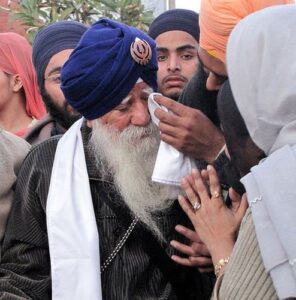
The objects of the Sikh faith are kesh, uncut hair, kangha, a small wooden comb, kachha (or kachhehra) shorts commonly worn as an undergarment, karha, metal bracelet, kirpan, and the sword of unspecified length. If a person was not Amritdhari Sikh at the time of his life, then relatives would wish that these articles of faith were given and that hair be left uncut. The body may also be surrounded by flowers.
Depending on the customs of some families, it may be possible to arrange to see a loved one before the funeral. There may also be an open casket at the Sikh funeral.
Sikh funeral service
The format of Sikh funerals can vary greatly. Sometimes there will be a service before cremation, cremation, and then another service at the gurdwara (Sikh shrine). Sometimes a corpse will be cremated, with a few prayers said.
Many Sikh funerals include the recitation of Ardas, a public prayer, and two daily prayers, Japji and Kirtan Sohila. Services may be performed at the home of a bereaved family, in a gurdwara, outside, or at a crematorium.
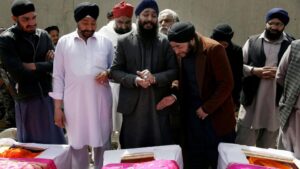
Sikh burning may occur during the day or at night. Usually, the bereaved family, close relatives, and friends will arrive when the body is cremated.
Sikh mourning practices
Ordinary mourning is not an acceptable part of a Sikh funeral. You will probably not see a public display of grief or ‘superstition’ rituals like lighting a candle to guide the soul. Only Waheguru’s name is repeated by the church for comfort and peace of mind. Funeral services are designed to show the mourners leaving the will of God, rather than focusing on their grief and sorrow.
Sikhism, however, acknowledges that grief is part of the loved one’s death, and it supports personal grief and comfort.
Cremation of Sikh body
Cremation is preferred at Sikh funerals. In some parts of the world, this is done with foreign funeral parlors, but in the UK this is limited to crematoriums. Burial or other forms of disposal are acceptable if circumstances do not allow for cremation.
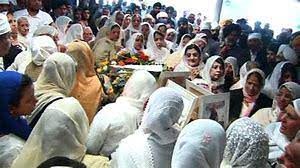
After being burned, the ashes are usually buried in the ground or scattered. Sikhs will usually scatter the ashes of their loved ones in flowing water, such as a river or the sea.
Sikhism does not allow monuments to be erected or stones to be erected in the name of the deceased to mark the place of cremation.
After the funeral of the Sikhs
Sikhism does not enroll in any mourning period or mourning rites after the death of a loved one. From the day of death, the bereaved family will make a devotional study of the entire Sri Guru Granth Sahib, a sacred Sikh scripture. There is a continuous reading of Sri Guru Granth Sahib called Akhand Path, which lasts for three days, or the reading is done within several days, usually 10 (recommended) or more depending on how easy relatives and family circumstances are. . In any case, this can be done at the family home or gurdwara.
Sometimes, if a Sikh funeral is delayed for any reason, such as due to a post-mortem examination or the discovery of a crematorium, the graduation ceremony of the Sri Guru Granth Sahib (also known as Brag paona) is held on the same day as the funeral. , after the cremation.
Sikh funeral etiquette
If you are not a Sikh who attends Sikh funerals, you will generally not be expected to participate in prayers and readings. Just be quiet with reverence, and sit or stand when the rest of the congregation does.
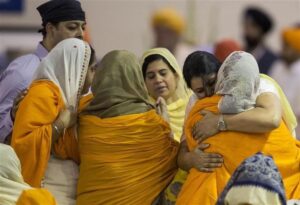
What to wear to a Sikh funeral?
For Sikh funerals, you should wear smart low-cut dresses, except with bright patterns. It is better to dress modestly, without showing too much skin. Sikhs will always cover their heads at funerals. As a sign of respect, you may be expected to do the same, wearing a men’s hat or hat and a women’s scarf. However, in some gurdwaras, you will be provided with a head cloth or scarf when you go to a gurdwara ceremony.
And remember that when you enter a gurdwara or a Sikh home, you will probably be expected to take off your shoes.




